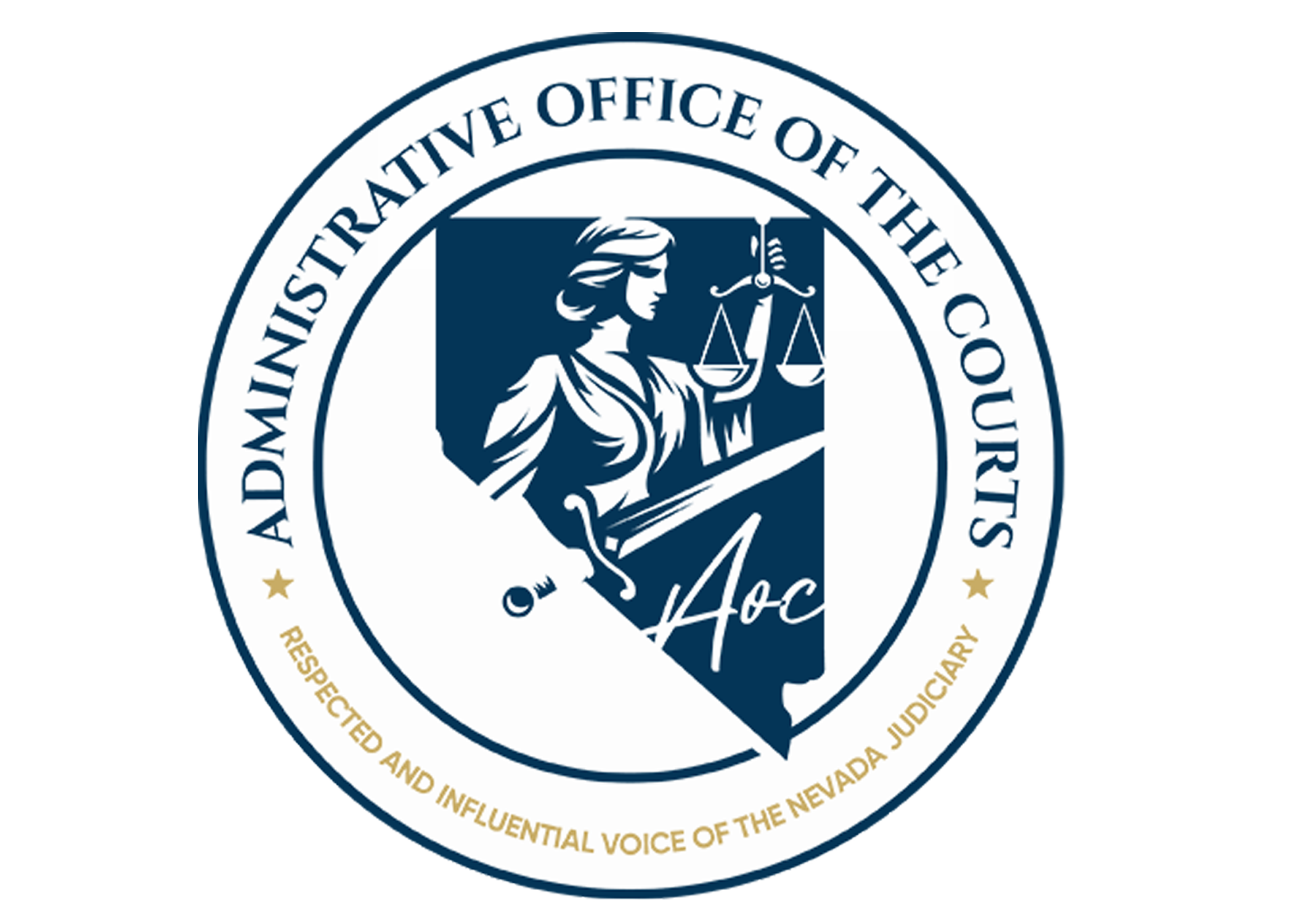Nevada Courts Data Warehouse FAQ
The Nevada Courts Data Warehouse (NCDW) is designed to enhance court efficiency, transparency, and effectiveness with data-driven decision-making. Key benefits include:
- Automated Data Collection: Eliminates the need for monthly reporting by streamlining data collection and validation.
- Improved Data Quality: Secure court dashboards provide monitoring of case health.
- Enhanced Access to Justice: Supports transparency and more effective case management.
- Adaptability: More easily integrates new metrics and case types without requiring report updates.
Implementation & Impact
Deployment will take multiple months after signing the Data Sharing Agreement (DSA) with the AOC. The timeline will vary based on court IT infrastructure and CMS complexity.
The court dashboard is designed to be user-friendly and familiar to those accustomed to USJR reporting. Training includes:
- 1-2 hours of initial training (individual or group sessions).
- Ongoing access to reference materials and refresher sessions.
Minimal impact is expected. Data replication occurs outside of active court hours or at times determined by the court.
- A designated data steward should regularly review case health reports and flag issues.
- IT support may be needed periodically for connection maintenance.
A CMS update requires reconfiguration based on the scope of changes, similar to the initial implementation process.
The implementation process includes:
- Stage 1 (start process): Court and AOC sign Data Sharing Agreement (DSA).
- Stage 2 (1-3 months): Establishing data connections and replication with court IT staff and CMS vendors. It is anticipated that there will need to be 3-4 conference calls and follow-up calls with court and IT staff.
- Stage 3 (1-3 months): Data mapping and transformation to align court’s data and manipulations with NCDW standards. It is anticipated that 3-4 conference calls and follow-up emails with IT staff and CMS vendors will be needed.
- Stage 4 (1-3 months): Validating NCDW performance metrics through draft visualizations with court administrators and court data stewards. Depending on the court process, this review for accuracy and errors may require more effort at first than current review of the monthly reports.
- Stage 5 (ongoing): Court access to dashboard for reviewing and reporting performance metrics, and monitoring data quality. As the NCDW evolves, future enhancements and metrics will require minimal effort if source data is provided by the court.
Cost Considerations
- Known Costs: In-kind staff time for initial setup, updates, and maintenance.
- Potential Costs:
- Case Management System (CMS) integration programming cost.
- PowerBI Pro license for court dashboard access (billed monthly or annually per user, often included in Microsoft 365 G5 licenses). For more information on PowerBI plans and pricing, please contact us at datawarehouse@nvcourts.nv.gov.
- Courts may apply to the AOC Grant Program. Please note: Available funding is limited. Due to limited availability, early applicants have the highest likelihood of receiving funding.
Security and Data Protection
- The NCDW is housed in a AWS Redshift Data Warehouse within the AWS GovCloud. AWS provides modern enterprise data management, ensuring strict security through firewalls, network access control lists (ACLs), and security groups.
- Additional information can be found here: AWS Redshift Security Overview, AWS GovCloud (US) - Amazon Web Services.
There are multiple options to consider for copying and transferring data securely.
- Virtual Private Network (VPN) connection to the court CMS for automated uploads.
- Application Program Interface (API) configuration for direct data requests and transfers.
- Secure File Transfer Protocol (SFTP) for encrypted manual submissions requiring authentication and firewalls.
- Encryption: All data is encrypted during transmission and storage.
- Access Controls:
- Only authorized NCDW users verified through AWS Identity and Access Management (IAM) can access the data warehouse
- Only specific court staff (based on roles) can access the court dashboard.
- Automated backups: AWS maintains regular snapshots stored in a separate zone, to ensure quick restoration in case of system failures or disasters.
- Security response: Any breaches trigger an immediate investigation with AWS and security partners, following protocols outlined in the Data Sharing Agreement.
Data Quality & Management
- Quality Assurance Testing: During the configuration process, courts will verify data accuracy and validate that the NCDR metrics match court information.
- Ongoing Monitoring: Courts will have access to the Data Quality Overview via the dashboard to identify and correct data entry issues.
While courts remain responsible for data integrity, the NCDW applies automated transformations and flags discrepancies for correction and will work with the court to ensure expected results.
- After the initial dataset is received, data updates (e.g., new cases and data corrections) can be submitted daily but must be sent at least once per month.
- Frequent updates improve data accuracy and monitoring.
Reporting & Metrics
A public dashboard will eventually display aggregate metrics, similar to USJR reports. No personal or case-level details will be shared.
Dashboard update timing is currently being tested, and more information will be provided when available. Update timing depends on data volume and PowerBI refresh schedules.
In future stages of the NCDW, Courts will be able to submit customization requests through the NCDW team. Enhancements based on court needs will be discussed and prioritized based on demand.
Until data quality processes are fully tested, courts should not use the dashboard for record requests. Once validated, the court dashboard will be an available tool to assist with requests. Courts may use it with proper citation and the court will take responsibility for the accuracy of reports and the protection of personal identifying information.
Your Feedback Matters
The NCDW team values your input. Let us know if you have any questions and how we can improve your experience. For questions, comments, or inquiries, please contact datawarehouse@nvcourts.nv.gov.

